I’ve had 17 blueberry bushes in my front yard garden for over a decade. That’s a long time to grow blueberries! Today I’m gonna show you how I take care of these guys on an ongoing basis, including pruning, fertilizing, dealing with pests and diseases, watering, and (the best part!), harvesting and storage!
Planting Blueberries
First things first, if you haven’t planted your blueberries yet, go check out our blueberry planting guide where I cover varieties, types, choosing locations, pollination, setting up your soil, when to plant, spacing and more. If you already have these suckers in the ground, stick around!
How Do Blueberries Grow?
There are a few types of blueberry bushes, and this plays a role in how blueberries grow. A highbush blueberry type is popular with home gardeners, but there are also lowbush varieties and “half bush” types. The highbush varieties are upright plants that can reach 6-12 feet, while the lowbush types cover the ground, growing only 2–24” high. Half bush types average 3-4 feet. I don’t have all the info on my older blueberries, but all my bushes are the highbush or half-high types.
Regardless of type, blueberries are woody shrubs with multiple stems, and can be grown as container blueberries or in the ground. It takes about ten years for a plant to become a full-grown blueberry bush, but starts producing ample harvests in 2-3 years. If maintained properly, a blueberry bush that is full grown can live up to 50 productive years. That’s why this was one of the first plants I planted in my garden!
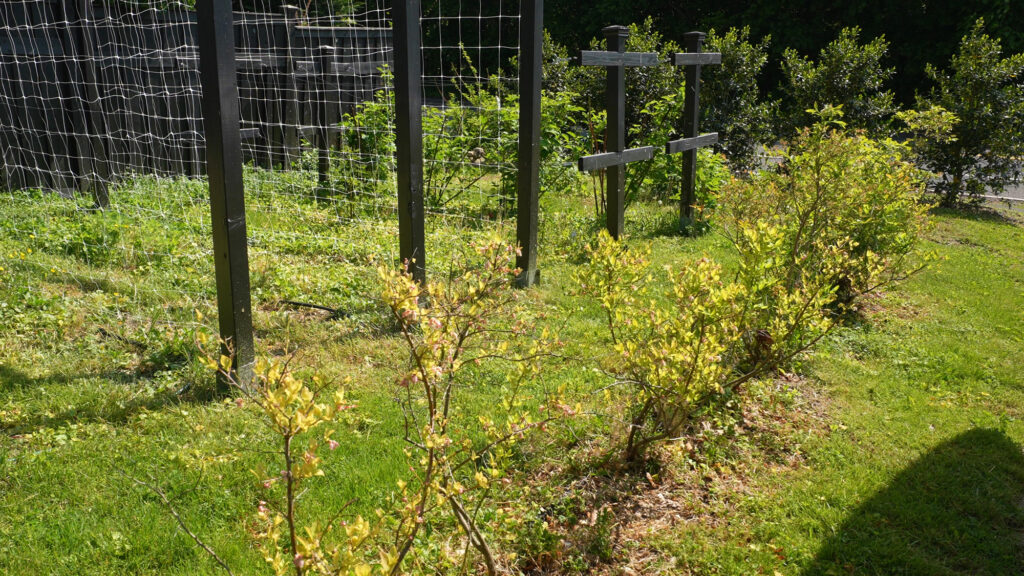
Some varieties need other blueberries to become pollinated and bear fruit. Check your plant tag for more info. For blueberry pollination to be most effective, at least 2 different varieties should be planted near one another.
Not only are blueberries delicious, the woody branches can be maintained as ornamental plants. I use them as a hedge along my driveway! Their deciduous foliage boasts impressive coloring in the fall and can be a stunning aspect of your landscaping.
Are you using your blueberries for the fruit, for landscaping or both? Share your plans with us in the comments!
Weeding & Edging Blueberries
Weeds steal moisture and nutrients from blueberries. So, the first step in blueberry maintenance is keeping weeds in check. This is a feat that is made much simpler with effective edging materials like those from our partners at Edge Right. I installed this steel edging in my trellis area last year during my annual spring soil prep and what a difference it made!
This year I’m adding it to my blueberry bed from corner to corner to help me create a clear line of where to start and stop weeding. Edging will also protect my young blueberry canes from threats like our string trimmer and lawn mower. I can’t tell you how many branches and canes I’ve accidentally broken while attempting to landscape! To top it off, edging is perfect for holding in mulch to keep weeds in check and moisture at ideal levels.
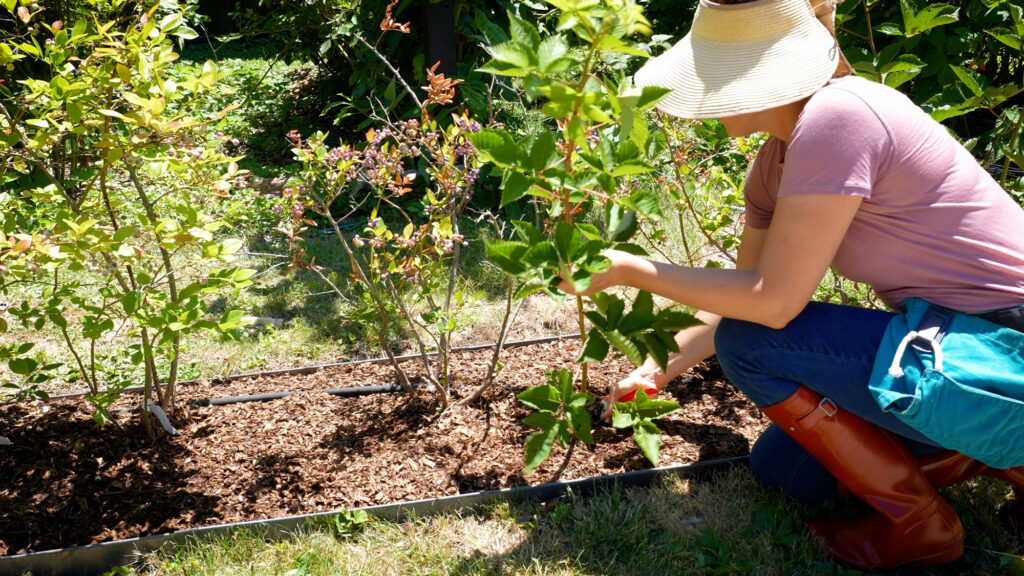
Blueberry Mulch
Speaking of mulch! One of best things you can do for your blueberries is to mulch them. Mulch helps cut down on weeds (and weeding duties!) and retains moisture (which cuts down on watering duties!). It also protects the shallow roots from the shock of direct application of fertilizer and amendments.
This year, for mulch, I’m using composted pine shavings and horse manure from a local stable, but you can also use leaves, straw, bark, wood chips, or for added acidity, pine needles.
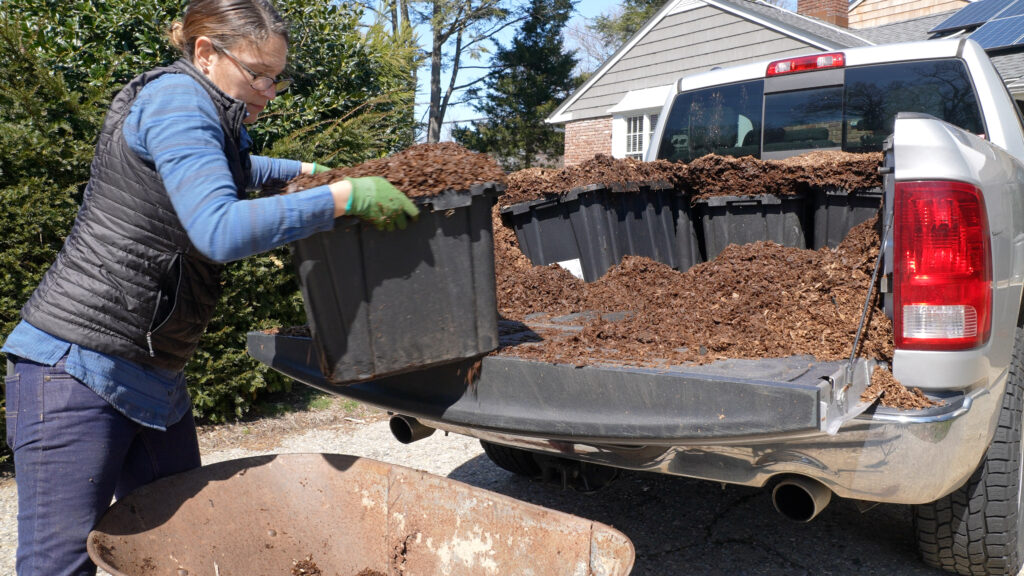
How to Amend & Acidify Soil for Blueberries
The best time to amend is when you plant, but likely if you have neutral or alkaline soil you will need to amend on a regular basis in addition to that. If you’ve watched our blueberry planting video, you know that blueberries prefer an acidic soil, with a pH on the lower side, between 4.0-5.5. If the pH is too high, the plants can get discolored and will grow slower.
First do a soil test, to see where you’re at. I’ve used liquid kits in the past, but I currently use an awesome digital tester from Lawnful, and am loving it!
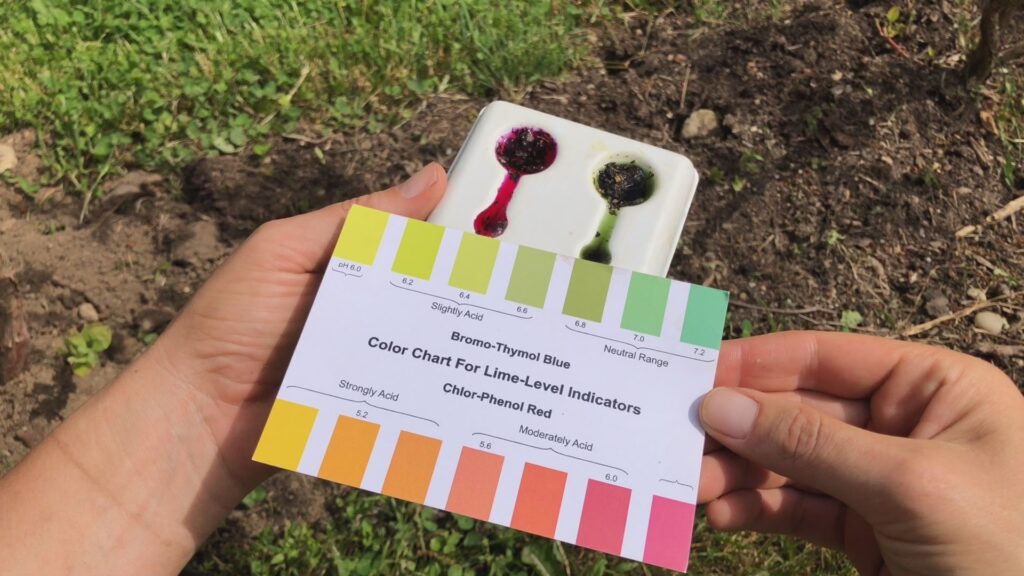
If you do need to acidify your soil, your best bet is a soil acidifier amendment which you can apply at a rate of about 2-3 cups per plant, depending on the brand and size of your plants. Sulfur also decreases pH. You can apply that at 1.5 lbs. Per 100 sqft.
One thing you want to avoid around blueberries is limestone, also called lime. That increases soil pH. Also avoid aluminum sulfate, which does decrease pH but is toxic to blueberries in excess.
If your amendment is labeled as blueberry-specific, you’re safe! Some great options are:
- Epsoma Soil Acidifier: 1¼ cup per plant for new plants, 2½ cups per plant for established plants.
- Jobe’s Organic Soil Acidifier:1½ cup per foot of plant spread, or per 16” with new plants.
- Stark Bros Soil Acidifier: use 1 cup per square yard of soil.
- Sulfur pellets (90%): 1½ lbs per 100 square feet of soil.
I have used Epsoma Soil Acidifier and Jobe’s organic soil acidifer before and both work great!
The Best Fertilizer For Blueberry Plants
If your pH is already good for blueberries, a balanced 7-7-7 or 10-10-10 garden and vegetable fertilizer will be all you need. In my garden, my go-to balanced fertilizer is Down To Earth’s 4-4-4 vegetable fertilizer, which I would double the volume on in this case to get the same power as the 10-10-10.
If your blueberries need acidification and also fertilizer, you can do double duty with an acid fertilizer. Fertilizers marketed for blueberries are perfect because they avoid nitrogen in nitrate form, which blueberries are sensitive to.
- Year of planting: apply ⅛ cup of a 7-7-7 fertilizer or ¼ cup of a 4-3-3 mixture per plant. Three to four weeks after planting, spread the fertilizer over the ground in a 15-18 inch circle around each plant. Follow this with a repeated application in 4-6 weeks.
- Second year: per plant, apply ¼ cup of 7-7-7 or ½ cup of 6-4-4 fertilizer in the spring, followed by a second fertilization 4-6 weeks later.
- Third year and beyond: Just after the buds break in the spring, repeat the year two procedure, adding ⅛ cup of 7-7-7 or ¼ cup of 4-3-3 or 6-4-4 each year, with a maximum application per plant of 12 or 24 ounces respectively. If growth is excessive, reduce the amount of fertilizer.
Here are some great options that would all be close enough to the 4-3-3 or 6-4-4 fertilizers mentioned above.
To apply, sprinkle the fertilizer around the dripline of each plant, lightly scratch it in, and water well.
Blueberry Watering
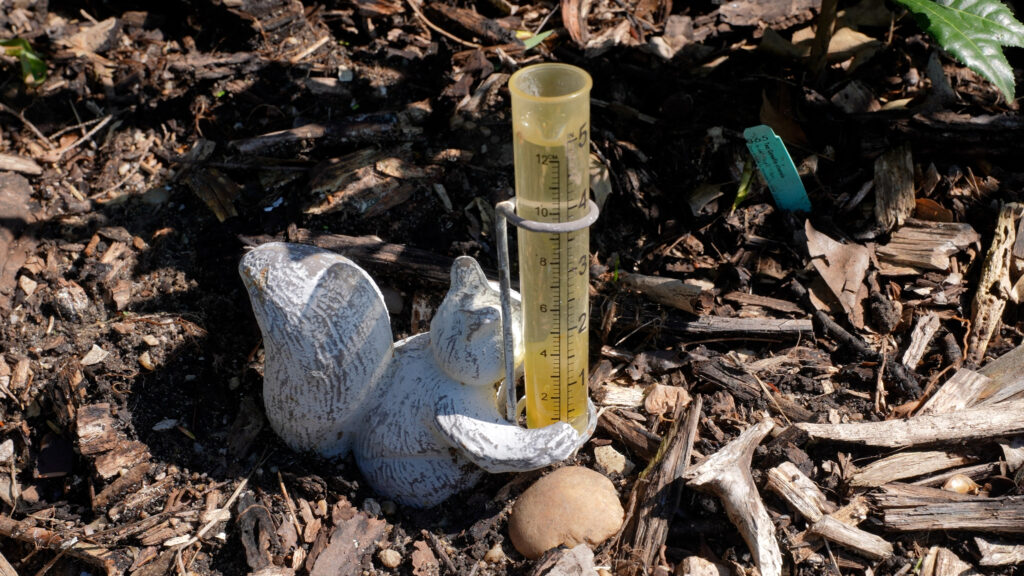
During their first two years, plants need 1-2 inches of water a week. You can track how much water your garden is getting with a rain gauge. I use one and when I’m organized I empty it once a week. But let’s be real, this is really just another excuse to buy some cute little piece of garden art and tell everyone you are “monitoring plant health”!
After the first few years, just make sure the first few inches of soil are damp. I live in the Northeast and we get about 45-55 inches of rain per year. So, for the most part I don’t water these guys anymore. Right now we are in the middle of a drought and heat wave, though, and my blueberries are shriveling up a bit and are definitely on the smaller side. I need to get out here and water!
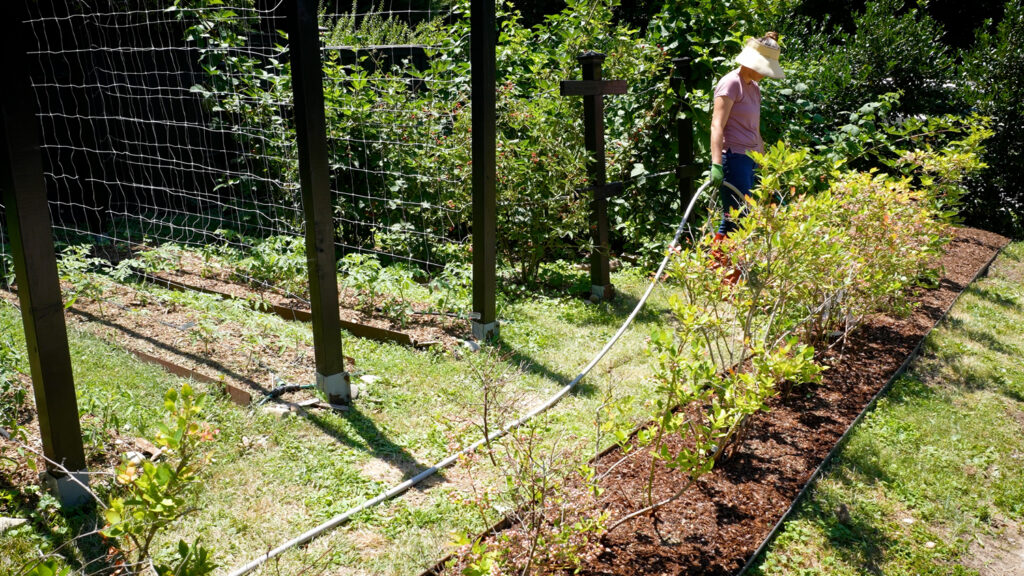
Let me know in the comments what your rainfall is in your area and how you manage keeping your blueberries from getting too thirsty.
Blueberry Pruning
Like most woody shrubs and berries, the best time to prune blueberries is when they’re dormant, in the winter or early spring. To keep the plants productive, prune 20% of the canes off every year. Remove any branches that are diseased, damaged, rubbing other canes, growing horizontally, are too thin to support fruit, or are whitish-gray, which means they are older branches.
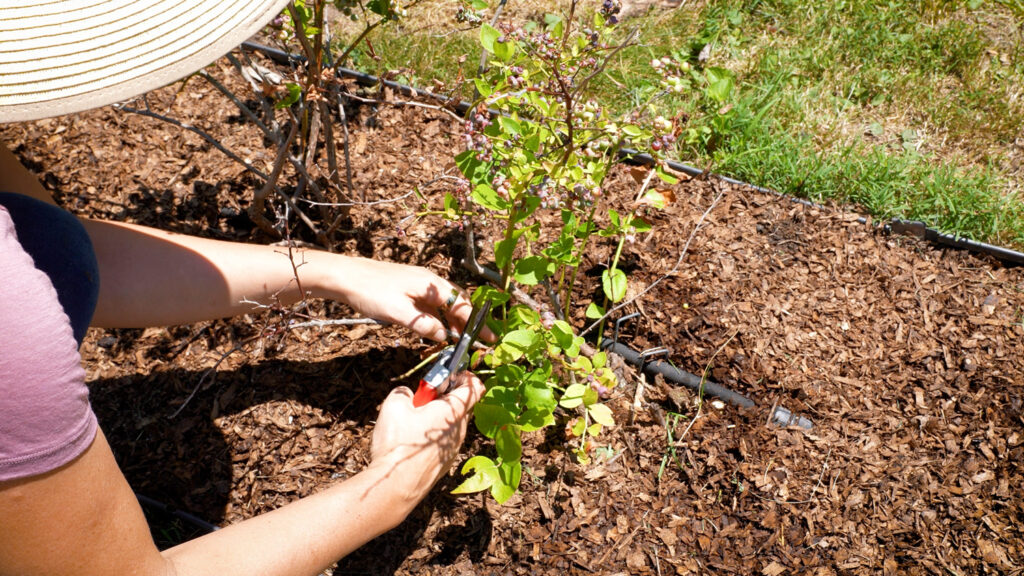
You’ll also want to remove the flower buds the first two years. This helps the plant focus on getting established. You can clip, pinch or rub the flowers off.
Now these are the pruning basics, but if you’re looking for a more in-depth tutorial, let me know in the comments.
Blueberry Pests
Blueberry pests can affect yields and the health of the plant as a whole. Common blueberry plant pests include:
- Japanese Beetles
- Aphids
- Leafhoppers
- Spotted Wing Drosophila—these blueberry bugs are a type of fruit fly that lay eggs in ripe fruit, ruining the berries.
There are very few tried-and-true methods of getting rid of these unwelcome guests. This is especially true if you’re trying to protect other beneficial critters like pollinators and butterfly caterpillars in the process.
Leave us a note in the comments about your blueberry pest dramas and how you solved them!
Birds
Birds are a whole ‘nother kind of pest, particular to blueberries. They deserve their own section here! There are a seemingly endless number of ways to keep birds away. Supposedly anyways. Some I have not tried are:
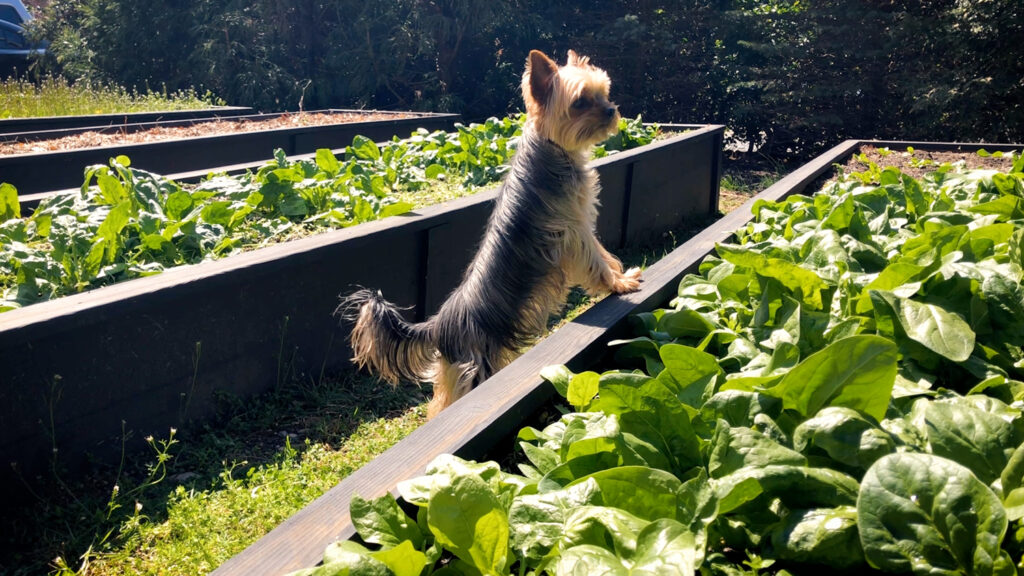
- scent deterrents
- noise deterrents
- guard animals
- shooting them
- trapping them
- electric fences
- reducing habitat
- spraying water
- using smoke
- falconry (for reals, falconry, guys)
If any of you guys have tried these, please let us all know in the comments! (Yo, especially if you have a falcon. Because I definitely want to hear about that!)
Now, I live in a suburbia—I cannot have a falcon!—so a lot of these won’t work for me or just sound like a bad idea. One I have tried is bird netting, which according to a Utah State University survey, was the most effective.
I had the worst experience with this stuff, though. I laid it on top of the bushes like they tell you, and within two days a bird actually got tangled in it and died, reducing me to a blubbering idiot. After researching, I saw this was super common. To make matters worse, the netting also got tangled in the berries, ripping off berries whenever I moved it.
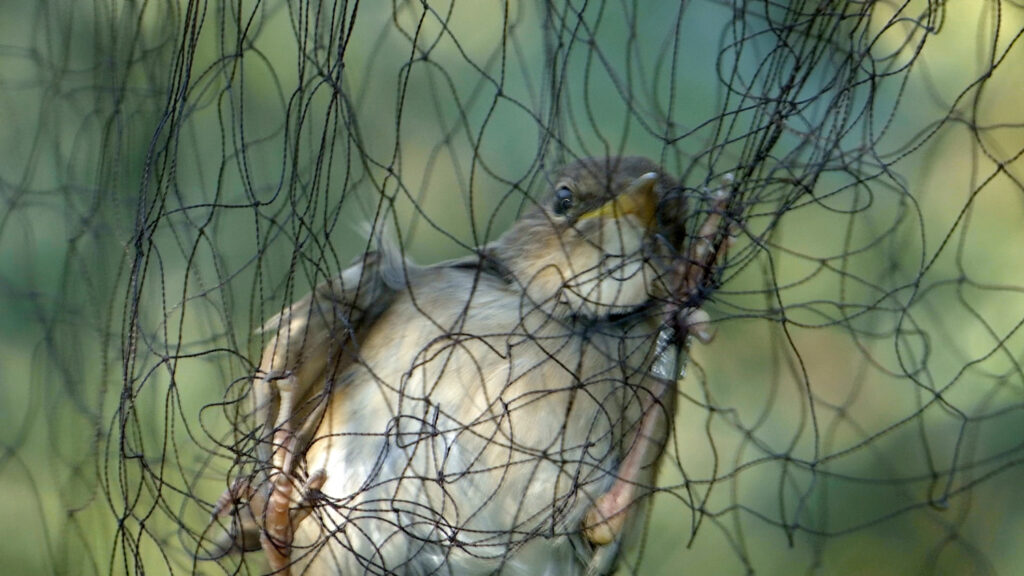
I would definitely not recommend this stuff, but you must use netting, two important tips. One, keep the netting very tight on a cage or frame of some kind, not the plants. And two, make sure there’s no opening that a bird can get trapped inside. Because birds will find a way inside!
Another alternative is row cover cloth, which I use to protect other areas of the garden from frost and squirrels. Birds are not going to get tangled in this. Mosquito netting works too.
Bees can’t get through to pollinate, though, so make sure not to put a row cover on blueberries until after all the berries have formed and the bees have done their work.
For my part, I have a design in my head, very similar to my compost sifter, for some portable A-frame hardware cloth units that I think will keep the birds and berries safe. Let me know if you guys are interested and I can make a video on that build!
Diseases
Much smaller problems can also plague blueberries. Common blueberry disease strains include:
- Blueberry leaf rust
- Blueberry leaf spot
- Blueberry stem blight
- Blueberry canker
- Blueberry root rot
- Mummy berry
These are just the common ones, but the University of Michigan extension lists almost 40 different blueberry diseases, with pictures for identification, and steps on how to treat your plants. Be sure to check that out if you’re wrestling with something in particular. Local Facebook garden groups are also a great resource at ID’ing pests and diseases.
Generally though, you can reduce your risk for disease and pests by making sure your plants are pruned properly, and properly spaced for good airflow, pruned properly, well-watered and have good soil health. Healthy plants are more resistant to attack.
You can even plant varieties that are resistant to the diseases and pests in your areas.
- Resistant to Blueberry Leaf Rust: Bluecrop, Burlington, Collins, and Weymouth
- Blueberry Leaf Spot: Most currently available cultivars are resistant to Blueberry Leaf Spot, though it may be problematic in older plantings.
- Resistant to Blueberry Stem Blight: Northsky, North Blue, Chippewa
- Resistant to Blueberry Canker: Bluetta, Elliot, Rancocas
- Resistant to Blueberry Root Rot: Star, Sharpblue, Windsor
- Resistant to Mummy Berry: Duke, Elliot, LateBlue, Northern Sky
If you do end up treating your blueberries, try to choose either mechanical or organic methods to reduce impact on the beneficial critters in our gardens that actually keep our plants healthy.
Harvesting
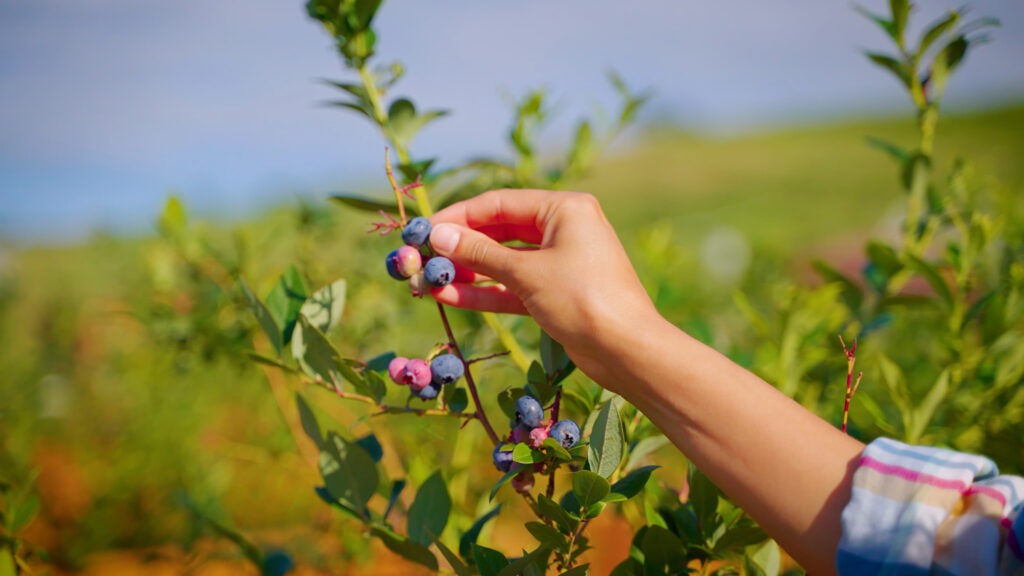
If you are pinching off the buds the first two years, year 3 is when you can expect your first blueberries. Unless you have a special colored variety like the Pink Lemonade blueberry, you’ll want to pick berries when they are a deep dark blue with zero shades of pink, lavender, or green on them. They should be slightly soft, but if they’re shriveled or brown looking you’ve waited too long.
If you’re not using a bird deterrent of some kind, I would highly recommend picking daily because it’s the ripe blueberries that get the birds’ attention. And once one bird finds out about your bushes, they are going to tell all their friends, and then the party’s over.
Except their party is not over. They’re about to have a big party in your garden!
You can pick blueberries by hand or use a special berry rake. I’ve used a rake on my currants (and it’s super fast), but haven’t tried it yet on my blueberries. Check your blueberries to see if a berry rake would work for you. Most of the blueberry fruits ripen at different times, so I’m not sure it would work well for my varieties.
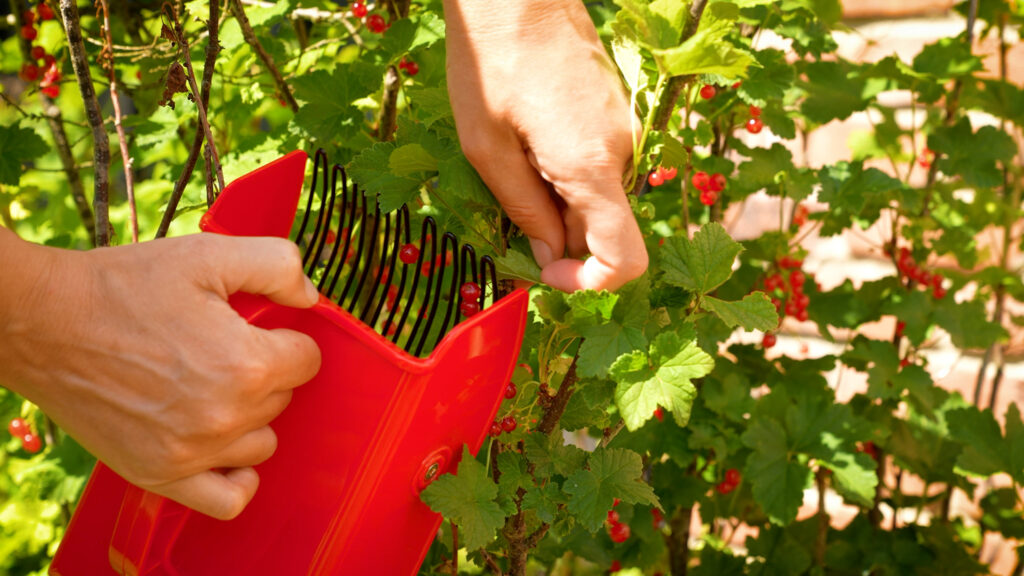
Storing
Once you’ve picked your blueberries, store them in the fridge, in a shallow container, so they don’t get squished. Just don’t wash them until you’re about to eat them.
You can also wash them and freeze them immediately. I freeze berries by putting them on cookie sheets. They go into the chest freezer for a day and then I transfer them to freezer bags long-term.
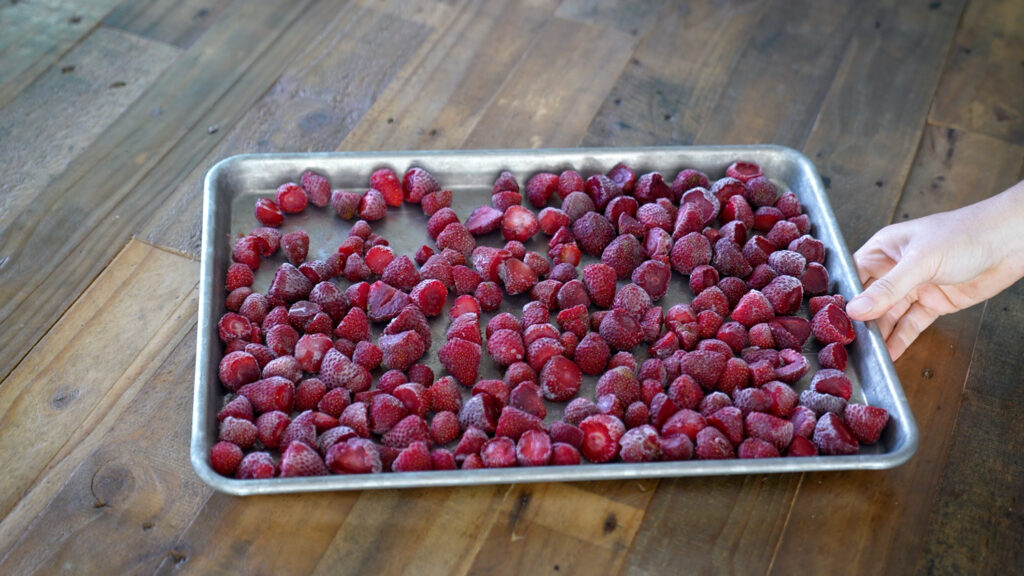
Now that you guys are blueberry experts I’m going to start a little friendly competition in the comments! Share with us how many pounds of blueberries you grow a year, what is your super secret, especially if you do that with a falcon!
Sources
- “How to Grow Blueberry Plants”, Stark Bro’s
- “Suggested Fertilizer Practices for Blueberries”, University of Connecticut Soil Nutrient Analysis Laboratory
- “Growing Blueberries in a Home Garden”, University of Maryland Extension
- “Diseases”, UMass Extension Fruit Program
- “Bird Protection for Blueberries & Other Fruit”, University of Massachusetts Amherst
- “Growing Blueberries in the Home Garden”, University of Minnesota Extension
- “Pruning Highbush Blueberries”, University of Vermont
- “Growing Blueberries for Beginners”, University of West Virginia Extension
- “Highbush Blueberry Fact Sheet”, USDA NRCS
- “Diseases”, Michigan State University



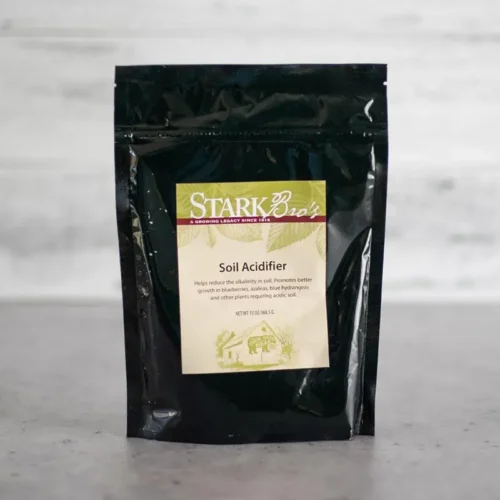
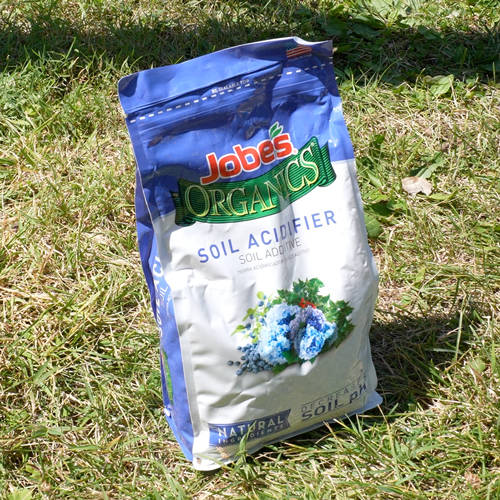
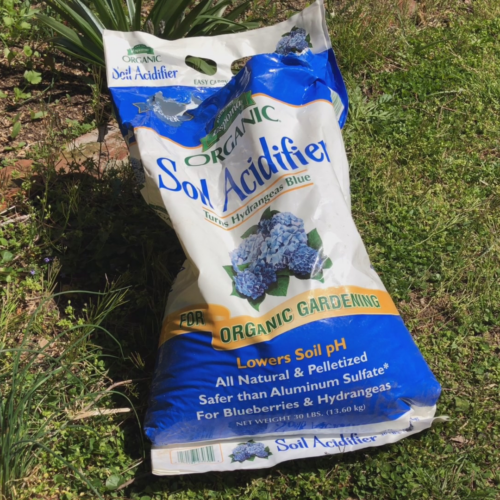
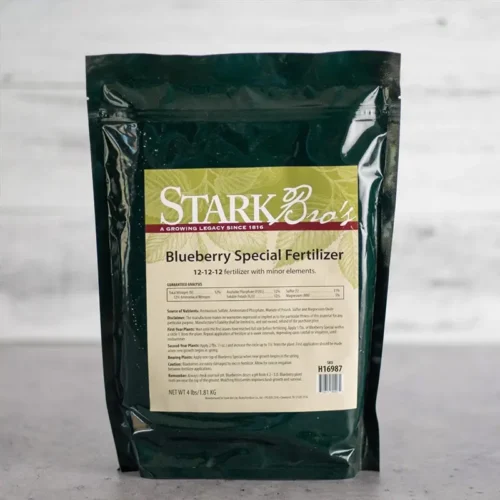
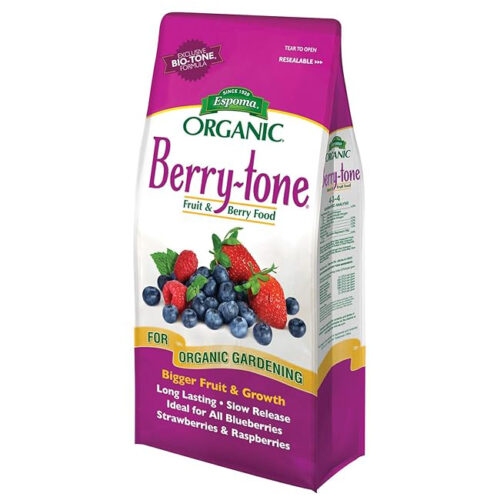
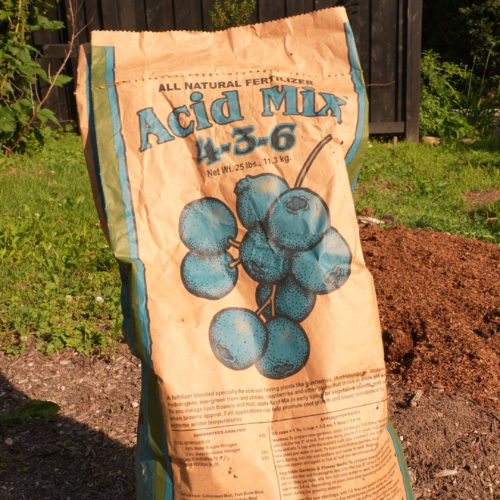
Leave a Reply